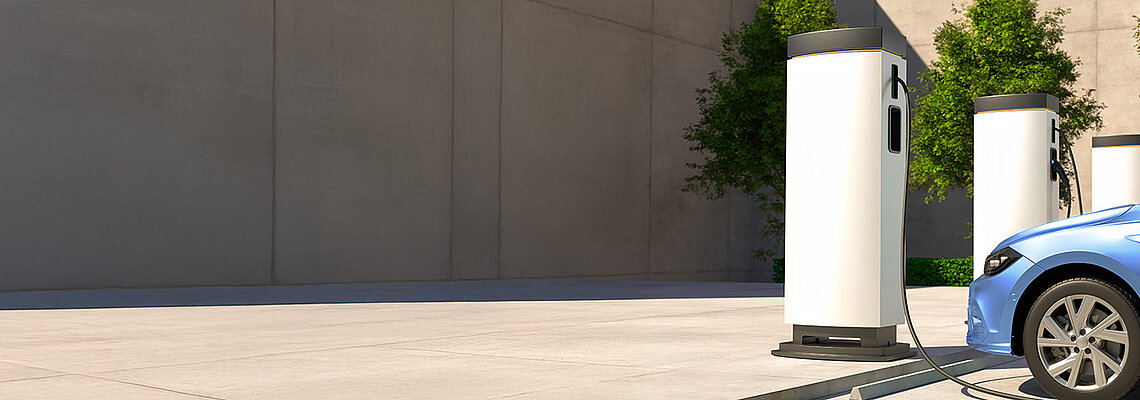
GEIG 2025: New Requirements for Charging Infrastructure in Commercial Buildings
The Building Energy Act (GEIG), which has been in force since 25 March 2021, has brought important modifications that affect both homeowners and tenants since 1 January 2021. Read here what measures are necessary now and how you can benefit from them.
GEIG, what is that?
The Building Electromobility Infrastructure Act (GEIG) regulates the expansion of charging and wiring infrastructure for electric vehicles in buildings. It came into force on 25 March 2021 with the aim of accelerating the expansion of electro-mobility through mandatory structural measures.
The GEIG stipulates when and to what extent parking spaces must be pre-equipped with charging infrastructure - especially for new buildings and refurbishments. It distinguishes between residential buildings and non-residential buildings, i.e. commercial property.
What modifications will apply from 2025?
Previously, the GEIG only obliged owners to prepare the charging infrastructure by providing cable ducts or empty conduits for retrofitting at a later date. However, a decisive change will apply from 1 January 2025:
- Non-residential buildings with more than 20 parking spaces must install at least one charging point.
- Non-compliance may result in a fine of up to €10,000 .
That means: Companies, commercial property operators and facility managers must live up to the legal requirements now in order to fulfil them on time.
Challenges for owners and operators
With the obligation to provide charging infrastructure, companies are facing new challenges. After all, a charging infrastructure consists of more than just the Wallbox - it must also be integrated into the building in a technically, economically and regulatory sensible way.
The following aspects must be taken into account:
- Existing electrical infrastructure: The new charging infrastructure must be integrated into the existing network without causing overloads or safety risks.
- Flexible energy utilisation: In addition to traditional line connections, renewable energies are playing an increasingly important role. The charging points should be combinable with PV installations, memories or intelligent energy management systems.
- Network serviceability: With the new regulation on grid-friendly control in accordance with Section 14a EnWG, simple Wallboxes without a communications interface may no longer be used. Intelligent solutions are required.
- Scalability: Even if only one charging point is installed for the time being, the infrastructure should be designed in such a way that future expansions are possible without any problems.
- Billing options: Simple and transparent billing for users or tenants must be guaranteed, especially in commercial properties.
What does this mean for planners, operators and electricians?
The increasing demands on charging infrastructure require careful planning. This is because charging at work or at home is now the most common charging scenario - over 85% of all charging processes take place here.
As annoying as legal requirements are, in the long term they bring many advantages for GEIG. At least if you take a clever approach to implementation:
- Choose future-proof technologies - Communication-enabled charging stations that are compatible with energy management systems ensure maximum flexibility.
- Create expandable infrastructure -there are charging points that can be expanded without having to re-plan the entire installation. Those who consider this option also remain flexible in this respect.
- Utilising dynamic pricing models - The electricity market continues to evolve: Companies can realise considerable cost benefits through flexible energy prices.
- Plan for PV integration - The option of using solar power or other renewable energies is not only sustainable, but also reduces operating costs.
On the safe side with Bender
The GEIG places clear requirements on the charging infrastructure: Safe, reliable and future-proof. Bender supports companies, electrical installers and planners in fulfilling these requirements - with solutions for residual current monitoring, protection against grid overload and integration into existing energy infrastructures.
Are you planning a GEIG-compliant charging infrastructure? Find out more about our solutions here.
With the new GEIG regulation from 2025, the expansion of charging infrastructure in commercial properties will become mandatory. Those who plan early and opt for an intelligent, future-proof solution will benefit in the long term.



